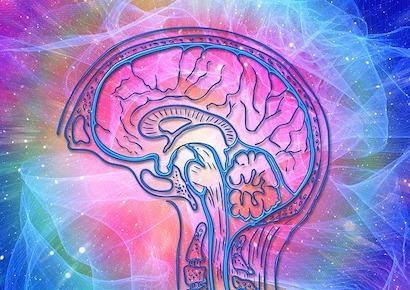
Hypnosis is a powerful tool, but to truly understand its power, it's important to know about brain waves. The five various brain wave frequencies (Beta, Alpha, Theta, Delta, and Gamma) each denote a certain state of consciousness and have their own distinct properties and degrees of brain activity.
Brain Wave States
Beta (13-30 Hz) is the frequency of normal waking consciousness and reasoning. It is linked to alertness, rationality, and critical thinking that is enhanced, but it can also cause anxiety, fear, and agitation.
Alpha (8-13 Hz) is present during deep physical and mental relaxation, daydreaming, light meditation, and when the eyes are closed. Imagination, vision, memory, learning, and focus are all best developed at this time, when the mind is being best programmed for success. It is also the gateway to the subconscious mind and the voice of intuition.
Theta (4-8 Hz) is present during hypnosis, deep meditation, light sleep, and the REM dream state. In between the alpha-theta brain wave states is the best range for visualization, mind programming, and employing creative force because it is the domain of the subconscious mind. This mental state allows you to consciously create your reality while being aware of your surroundings and having your body in deep relaxation.
Delta (below 4 Hz) is the deep sleep wave and the slowest frequency. It's experienced during deep, dreamless sleep and deep transcendental meditation and hypnosis states with detached awareness. This is the unconscious mind's domain and the entrance to the collective unconsciousness, which contains knowledge that is otherwise hidden from conscious awareness. Delta is important for health restoration as it's interconnected with deep healing and rejuvenation.
The fastest frequency is known as Gamma (above 30 Hz). This wave is inextricably linked to quick bursts of inspiration and high level information processing.
Best Hypnotic Brain Wave States
Hypnotherapists prefer clients in a medium level trance (Theta brain waves), where the subject is alert but undisturbed by outside noises, thoroughly relaxed, and more suggestible than in a light trance (Alpha brain waves).
In the hypnotic state, the hypnotist has access to the client's subconscious brain, which is responsible for learned behavior patterns. The hypnotist can deliver therapy by bypassing the critical thinking of the conscious mind and accessing the subject's unconscious mind. This makes the client more suggestible to desired changes and transforms suggestions into action at the subconscious level of the mind.
The very best hypnotherapy results can be achieved when the client is in a deep trance (Delta brain waves), which is a somnambulistic trance. In this state, the client can open their eyes without it impairing their hypnotic state, and they can absorb complex ideas while experiencing selective and illusory sensory awareness. However, it's crucial to keep in mind that even a mild trance can be beneficial if it enables the client's mental processes to be addressed without the conscious mind's constant critical thinking.
Most clients who are in a light to medium trance remember what was said while they were under hypnosis. The subconscious mind hears and remembers everything, regardless of conscious recall, even when the conscious mind is in a profound trance and may not remember what was spoken.
Hypnosis can be an effective tool for releasing negative thoughts, anxieties, and issues related to a previous time in life. By accessing the subconscious mind, hypnosis can help free clients of unwanted thoughts and behavior and allow them to truly enjoy their lives. The power of hypnosis lies in its ability to tap into the unconscious mind and bring about change at the subconscious level.
In conclusion, hypnosis is a powerful tool that can help people overcome negative thoughts and behaviors. By inducing the person into a state of deep relaxation and focused attention, the hypnotist can access the person's subconscious mind, which is where learned behavior patterns are stored. This makes the person more susceptible to desired changes, and the hypnotist can deliver therapy by making suggestions that can be transformed into action at the subconscious level.
It's important to understand the various brain wave frequencies and their associated states of consciousness, as this information can help guide the hypnotherapist in choosing the optimal state for therapy. While even a light trance (Alpha waves) can be effective, a medium trance (Theta waves) is often the preferred state for hypnotherapy, as it allows the person to be aware of their surroundings but not distracted by outside noises. And, although less than the majority of people can achieve it, the best hypnotherapeutic work can be done when the person is in a deep trance (Delta waves).
In any level of trance, the subconscious mind hears and makes changes, and it is not necessary for the person to consciously remember what was said. Instead, it is the unconscious mind that listens and remembers and makes the changes, freeing the person from negative thoughts and behaviors and allowing them to truly enjoy life.
If you are struggling with negative thoughts, anxieties, bad habits or other issues, consider giving hypnosis a try. Not only can it help you overcome these challenges, but it can also enable you to live life to the fullest and experience greater joy and happiness. So why not take the first step today and discover the power of hypnosis for yourself?
